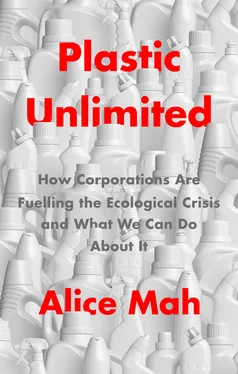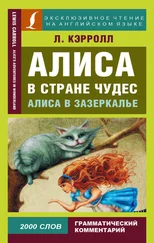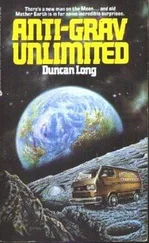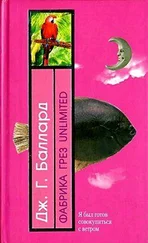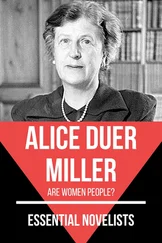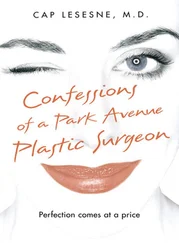7 7 Zhou Peng, Theo Jan Simons, Jeremy Wallach, and Adam Youngman, ‘Petrochemicals 2020: A Year of Resilience and the Road to Recovery’, McKinsey, 21 May 2021, at https://www.mckinsey.com/industries/chemicals/our-insights/petrochemicals-2020-a-year-of-resilience-and-the-road-to-recovery.
8 8 Author’s field notes, virtual World Petrochemical Conference, 8–12 March 2021.
9 9 Parker, ‘Fast Facts About Plastic Pollution’.
10 10 Plastic Soup Foundation, Facts & Figures, at https://www.plasticsoupfoundation.org/en/plastic-facts-and-figures; Sarah Zhang, ‘Half of All Plastic Was Made in the Past 13 Years’, The Atlantic, 19 July 2017, at https://www.theatlantic.com/science/archive/2017/07/plastic-age/533955.
11 11 See Ian Tiseo, ‘Cumulative Plastic Production Volume Worldwide from 1950 to 2050’, Statista, 27 January 2021, at https://www.statista.com/statistics/1019758/plastics-production-volume-worldwide; Ellen MacArthur Foundation, with the support of the World Economic Forum, The New Plastics Economy: Rethinking the Future of Plastics & Catalysing Action (2017), at https://www.ellenmacarthurfoundation.org/publications/the-new-plastics-economy-rethinking-the-future-of-plastics-catalysing-action.
12 12 Lisa A. Hamilton, Steven Feit, Carroll Muffett, et al., Plastic and Climate: The Hidden Costs of a Plastic Planet (Center for International Environmental Law, 2019). Other estimates put this figure at 98%: see Dominic Charles, Laurent Kimman, and Nakul Saran, The Plastic Waste Makers Index (Minderoo Foundation, 2021), at https://www.minderoo.org/plastic-waste-makers-index/findings/executive-summary/.
13 13 Other petrochemical products include pesticides, adhesives, synthetic textiles, rubbers, dyes, fertilizers, and synthetic paints and coatings. Eren Cetinkaya, Nathan Liu, Theo Jan Simons, and Jeremy Wallach, ‘Petrochemicals 2030: Reinventing the Way to Win in a Changing Industry’, Chemicals: Our Insights, 21 February 2018, at https://www.mckinsey.com/industries/chemicals/our-insights/petrochemicals-2030-reinventing-the-way-to-win-in-a-changing-industry.
14 14 Charles et al., The Plastic Waste Makers Index.
15 15 David Azoulay, Priscilla Villa, Yvette Arellano, et al., Plastic and Health: The Hidden Cost of a Plastic Planet (Center for International Environmental Law, 2019).
16 16 Pierpaolo Mudu, Benedetto Terracini, and Marco Martuzzi, Human Health in Areas with Industrial Contamination (WHO Regional Office for Europe, 2014).
17 17 See Sara M. Wiebe, Everyday Exposure: Indigenous Mobilization and Environmental Justice in Canada’s Chemical Valley (UBC Press, 2016); Beverly Wright, ‘Race, Politics and Pollution: Environmental Justice in the Mississippi River Chemical Corridor’, in Just Sustainabilities: Development in an Unequal World, eds Julian Agyeman, Robert D. Bullard, and Bob Evans (MIT Press, 2003), pp. 125–45.
18 18 Elisabeth Mendenhall, ‘Oceans of Plastic: A Research Agenda to Propel Policy Development’, Marine Policy, 96 (2018): 291–8.
19 19 Karen McVeigh, ‘Coca-Cola, Pepsi and Nestlé Named Top Plastic Polluters for Third Year in a Row’, Guardian, 7 December 2020, at https://www.theguardian.com/environment/2020/dec/07/coca-cola-pepsi-and-nestle-named-top-plastic-polluters-for-third-year-in-a-row.
20 20 Charles et al., The Plastic Waste Makers Index.
21 21 Anja Krieger, ‘Nobody Knows How Much Plastic and Fish Will Swim in the Ocean by 2050’, 20 March 2019, at https://www.riffreporter.de/de/umwelt/faktencheck-plastik-fisch; Leo Hornak, ‘Will There Be More Fish or Plastic in the Sea in 2050?’ BBC News Magazine, 15 February 2016, at https://www.bbc.co.uk/news/magazine-35562253.
22 22 See chapter 2.
23 23 See chapter 4.
24 24 Prachi Patel, ‘Stemming the Plastic Tide: 10 Rivers Contribute Most of the Plastic in the Oceans’, Scientific American, 1 February 2018, at https://www.scientificamerican.com/article/stemming-the-plastic-tide-10-rivers-contribute-most-of-the-plastic-in-the-oceans. The ten rivers finding was overturned by another study in 2021, which showed that 1,000 small and medium-sized rivers, rather than large rivers, accounted for 80% of the plastic waste flowing into oceans, all from five countries in Asia, but the basic point about geography remained. See Lourens J. J. Meijer, Tim van Emmerik, Ruud van der Ent, Christian Schmidt, and Laurent Lebreton, ‘More than 1000 Rivers Account for 80% of Global Riverine Plastic Emissions into the Ocean’, Science Advances, 7(18), 30 April 2021, at https://advances.sciencemag.org/content/7/18/eaaz5803.
25 25 Alliance to End Plastic Waste, ‘Launching the Alliance to End Plastic Waste’, London, 16 January 2019, at https://www.youtube.com/watch?v=MOfF6SUT0nY.
26 26 Kate O’Neill, ‘Can the World Win the War on Plastic?’ World Politics Review, 10 March 2020, at https://www.worldpoliticsreview.com/articles/28590/having-polluted-the-oceans-plastics-are-now-facing-a-popular-backlash.
27 27 Aarushi Jain, ‘Trash Trade Wars: Southeast Asia’s Problem with the World’s Waste’, Council on Foreign Relations 100, 8 May 2020, at https://www.cfr.org/in-brief/trash-trade-wars-southeast-asias-problem-worlds-waste; Yen Nee Lee, ‘Malaysia, Following in China’s Footsteps, Bans Plastic Waste Imports’, CNBC, 25 January 2019, at https://www.cnbc.com/2019/01/25/climate-change-malaysia-following-china-bans-plastic-waste-imports.html.
28 28 The concept of ‘waste colonialism’ will be discussed in further detail in the next chapter. See also David Naguib Pellow, Resisting Global Toxics: Transnational Movements for Environmental Justice (MIT Press, 2007); Max Liboiron, ‘Waste Colonialism’, Discard Studies, 1 November 2018, at https://discardstudies.com/2018/11/01/waste-colonialism/.
29 29 Lucy Siegle, Turning the Tide on Plastic: How Humanity (And You) Can Make Our Globe Clean Again (Orion Publishing, 2018); Will McCallum, How to Give Up Plastic: A Guide to Changing the World, One Plastic Bottle at a Time (Penguin, 2018); Martin Dorey, No. More. Plastic.: What You Can Do to Make a Difference – the #2minutesolution (Penguin, 2018); The F Team, F**k Plastic: 101 Ways to Free Yourself from Plastic and Save the World (Seven Dials, 2018).
30 30 Alice Delemare Tangpuori, George Harding-Rolls, Nusa Urbancic, and Ximena Purita Banegas Zallio, Talking Trash: The Corporate Playbook of False Solutions to the Plastics Crisis (Changing Markets Foundation, 2021); Greenpeace, Throwing Away the Future: How Companies Still Have It Wrong on Plastic Pollution ‘Solutions’, 30 September 2019, at https://www.greenpeace.org/usa/research/how-companies-still-have-it-wrong-on-plastic-pollution-solutions; Break Free From Plastic, ‘Missing the Mark: Unveiling Corporate False Solutions to the Plastic Pollution Crisis’, 21 June 2021, at https://www.breakfreefromplastic.org/missing-the-mark-unveiling-corporate-false-solutions-to-the-plastic-crisis/.
31 31 Author’s field notes, petrochemical markets workshop, London, 25–7 September 2018.
32 32 Jeffrey Meikle, American Plastic (Rutgers University Press, 1995), p. 3.
33 33 Lloyd Stouffer, ‘Plastics Packaging: Today and Tomorrow’, Report presented to the National Plastics Conference, The Society of the Plastics Industry, 1963.
34 34 Roland Barthes, Mythologies, trans. Annette Lavers (Hill and Wang, 1972), p. 111.
35 35 The plastics executive is quoted in Susan Freinkel, Plastic: A Toxic Love Story (Dreamscape Media, 2011), p. 6.
36 36 Plastics Europe, Plastics – the Facts 2020: An Analysis of European Plastics Production, Demand and Waste Data, accessed online on 27 April 2021 but no longer available.
37 37 See Freinkel, Plastic; Siegle, Turning the Tide on Plastic.
38 38 Rebecca Altman, ‘The Myth of Historical Bio-based Plastics’, Science, 373 (2021): 47–9 (p. 48).
Читать дальше
